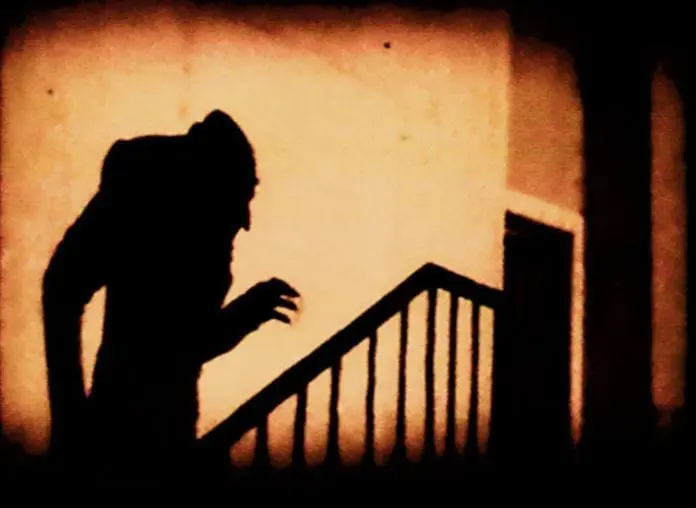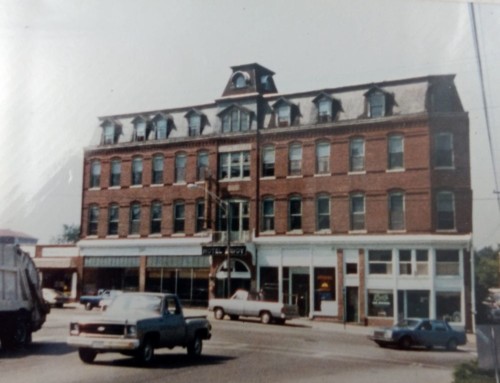Years ago when traveling in the jungles of Central America I was sitting on the porch of a lodge on the Sittee River in Belize when a bird started flitting around my head. I mentioned it to the guide and he said, “Oh, that’s a vampire bat.” That statement took me back a bit but I learned they mostly attack cattle and not to leave my toes sticking out of the mosquito net.
Speaking of which, I guess you could consider mosquitos to be vampires too. This story is about what most people think of as vampires, the classical human fiend who preys on other people by sucking the blood out of their neck.
The poor victims then turn into a vampire themselves and rise from their coffins at night to prey on other humans. I think it’s safe to say that most people today don’t believe in vampires but it might surprise you to learn that there was a time in New England when the belief in vampires was widespread, even here in Rhode Island.
Legends of vampires have existed in various cultures for thousands of years. The Mesopotamians, Hebrews, ancient Greeks and Romans all had tales of demonic entities and blood-drinking spirits. The modern version of the vampire originates mostly from early 18th-century southeastern Europe, particularly Transylvania.
Vampires were thought to be revenants of evil beings, suicide victims or witches, but could also be created by a malevolent spirit possessing a corpse or by being bitten by a vampire itself. Belief in such legends became so rife that in some areas it caused mass hysteria and even public executions of people believed to be vampires.
The charismatic and sophisticated vampire of modern fiction was born in 1819 with the publication of The Vampyre by John Polidori but it was Bram Stoker‘s 1897 novel Dracula which is remembered as the quintessential vampire novel. Some experts think that Bram Stoker could have based some of his story on the Mercy Brown vampire incident that occurred in Exeter, Rhode Island in 1892.
The Mercy Brown incident was part of the New England vampire panic. The panic was, you guessed it, the belief that the dead were coming back and feeding on the living. This was caused by ignorance and superstition surrounding the spread of the disease M. tuberculosis.
Tuberculosis was called consumption at the time because of the wasted appearance of its victim’s. The disease had many symptoms and its cause was poorly understood until 1882 when Robert Koch identified and described it. It was the leading cause of mortality in New England at the time causing 25% of all deaths.
M. tuberculosis is still a major threat today. In 2012, 8.6 million people had active cases of the disease which resulted in 1.45 million deaths. With the discovery of the antibiotic Streptomycin in 1946 it was thought that the disease could be completely eliminated but the development of drug resistant strains in the 1980’s ruined that hope. It is a terrible way to die with a high fever, bloody cough and visible wasting away of the body.
The Mercy Brown incident started when several cases of consumption (tuberculosis) occurred in the family of George and Mary Brown. The mother, Mary Eliza, was the first to die of the disease, followed a year later by eldest daughter 20 year old Mary Olive. A few years later their son Edwin, a store clerk whom a local newspaper described as “a big husky young man” took ill. He went to Colorado hoping the change of climate would cure him.
Nearly a decade after her mother and sister had been buried Mercy Brown developed the dreaded symptoms of the galloping kind of Tuberculosis which meant she probably had contracted the disease much earlier but was asymptomatic.
Mercy quickly went downhill and died in 1892. In the meantime Edwin had returned from Colorado and was in dying condition.
Some neighbors went to the father, George Brown, and offered an alternate reason for the family’s tragic deaths. They believed one of the three deceased women must be a vampire feeding on son Edwin’s flesh and blood.
On the morning of March 17, 1892, after George Brown gave his permission, a group of men dug up the mother and sister’s bodies while the family doctor and a Providence Journal reporter looked on.
The two women’s bodies exhibited the expected level of decomposition so they were thought not to be the cause. Daughter Mercy, however, had been held in a freezer-like above ground keeper room. This was common practice at the time when the ground was too frozen to dig a grave. When Mercy’s grave was opened her corpse exhibited very little decomposition. The correspondent later wrote “the body was in a fairly-well preserved state.”
This was taken as confirmation that Mary must be the vampire who was consuming Edwin’s body. Mercy’s heart was removed, placed on a nearby rock, and burned. The ashes from her heart were mixed with water and given to her brother Edwin to drink.
The mixture was thought to put a stop to the vampire’s predation. (I can’t image what Edwin must have felt as he had to drink the noxious mixture of ashes from his sister’s heart.) Unsurprisingly for Edwin the cure was ineffective and the unfortunate young man died two months later.
Newspapers called the belief in vampirism an “old superstition” and a “curious idea”. While the press dismissed this practice as superstition the burning of organs was widely accepted as a folk medicine in other communities. In one town, records report, hundreds of onlookers attended the burning of what was thought to be a vampire’s heart.
There are at least 80 known vampire exhumations in the Rhode Island area and some experts think there are probably hundreds more waiting to be discovered. What remained of Mercy’s body was buried in the cemetery of the Baptist Church in Exeter, Rhode Island. May she rest in peace.







